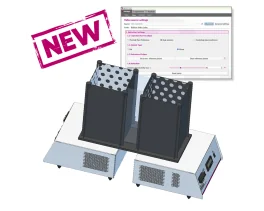Authors
J. Pelletier, B. Fromy, G. Morel, Y. Roquelaure, J.L. Saumet et al.
Lab
Institut de Biologie et Chimie des Protéines-FRE CNRS 3310, Lyon, France.
Journal
Pain
Abstract
Most studies of chronic nerve compression focus on large nerve function in painful conditions, and only few studies have assessed potential changes in the function of small nerve fibers during chronic nerve compression and recovery from compression. Cutaneous pressure-induced vasodilation is a neurovascular phenomenon that relies on small neuropeptidergic fibers controlling the cutaneous microvasculature. We aimed to characterize potential changes in function of these small fibers and/or in cutaneous microvascular function following short-term (1-month) and long-term (6-month) nerve compression and after release of compression (ie, potential recovery of function). A compressive tube was left on one sciatic nerve for 1 or 6 months and then removed for 1-month recovery in Wistar rats. Cutaneous vasodilator responses were measured by laser Doppler flowmetry in hind limb skin innervated by the injured nerve to assess neurovascular function. Nociceptive thermal and low mechanical thresholds were evaluated to assess small and large nerve fiber functions, respectively. Pressure-induced vasodilation was impaired following nerve compression and restored following nerve release; both impairment and restoration were strongly related to duration of compression. Small and large nerve fiber functions were less closely related to duration of compression. Our data therefore suggest that cutaneous pressure-induced vasodilation provides a non-invasive and mechanistic test of neurovascular function that gives direct information regarding extent and severity of damage during chronic nerve compression and recovery, and may ultimately provide a clinically useful tool in the evaluation of nerve injury such as carpal tunnel syndrome.
Source :
http://www.painjournalonline.com/article/S0304-3959%2811%2900587-2/abstract

 Pain - Thermal Allodynia / Hyperalgesia
Pain - Thermal Allodynia / Hyperalgesia Pain - Spontaneous Pain - Postural Deficit
Pain - Spontaneous Pain - Postural Deficit Pain - Mechanical Allodynia / Hyperalgesia
Pain - Mechanical Allodynia / Hyperalgesia Learning/Memory - Attention - Addiction
Learning/Memory - Attention - Addiction Physiology & Respiratory Research
Physiology & Respiratory Research











![Dynamic Weight Bearing 2.0 – Postural Module [Add-on]](https://bioseb.com/733-home_default/dynamic-weight-bearing-20-add-on-postural-module.jpg)
























 Pain
Pain Central Nervous System (CNS)
Central Nervous System (CNS) Neurodegeneration
Neurodegeneration Sensory system
Sensory system Motor control
Motor control Mood Disorders
Mood Disorders Other disorders
Other disorders Muscular system
Muscular system Joints
Joints Metabolism
Metabolism Cross-disciplinary subjects
Cross-disciplinary subjects CONFERENCES & MEETINGS
CONFERENCES & MEETINGS